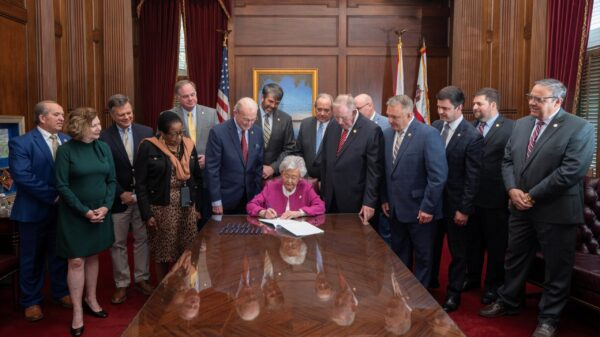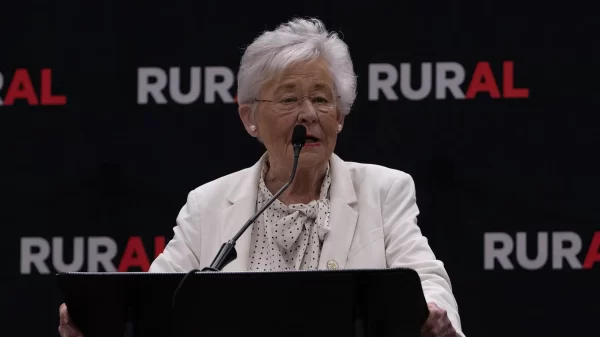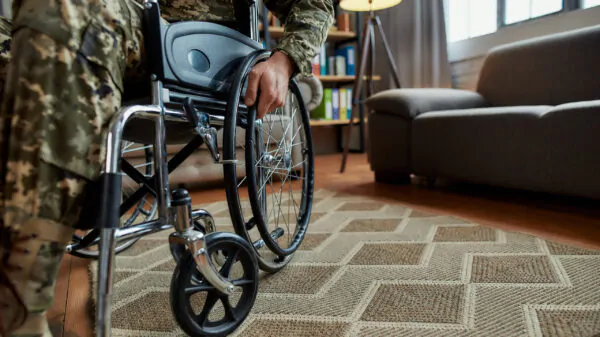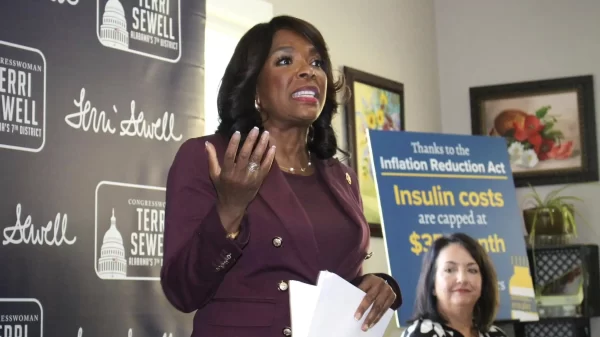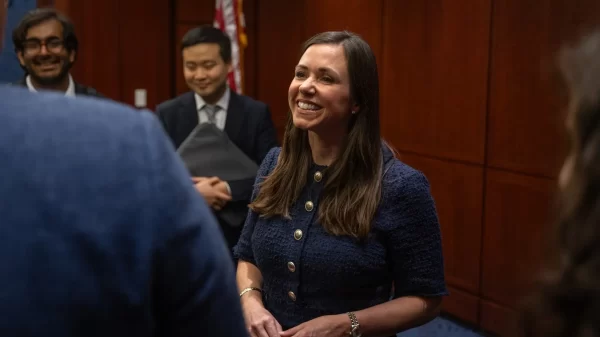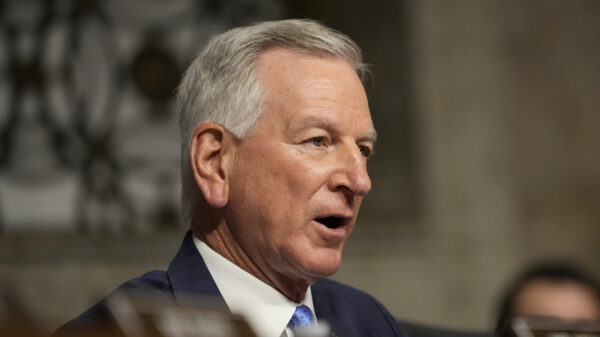|
Getting your Trinity Audio player ready...
|
Published every year since 1994, by VOICES for Alabama Children, the Alabama Kids Count Data Book compiles data about children’s well-being produced by state and federal agencies. The 2024 edition, released on Monday, foregrounds economic inequality and lack of access to necessary programs amongst poor communities in Alabama.
In the preface, VOICES for Alabama Children director Rhonda Mann asks, “Will we continue to express our values while failing to act on them? Or will we choose to overcome our fears and commit to better policies that can resolve the disparities affecting so many of our children?”
During an interview with APR on Tuesday, Apreill Hartsfield, the Alabama Kids Count director for VOICES, said the organization decided to focus this year’s report on economic issues because last year “the thing that really just stood out to us was child poverty.”
“When we went back and looked at our child poverty rate over the last 20 years, it’s just really been stagnant around that 21 percent mark,” she explained. “It hasn’t gotten any better, and so we just really wanted to look and see what were some of the things that were driving child poverty in Alabama.”
During a press conference earlier this week, Hartsfield told reporters that VOICES’ vision while developing their latest report was an “economically secure Alabama for every child.”
“What we really focused on is those basic essential needs to make sure that children are healthy, that they are living in a secure, stable environments, that they are well educated, they’re in schools where they’re learning,” she explained. “Really, just access to the services. Those opportunities can be out there, but if you don’t have access to them, it doesn’t really mean anything to you.”
One of the most memorable parts of the 2024 report is a graphic comparing access to hospitals providing obstetrical service across Alabama in 1980 and May 2024. According to data from the Alabama Department of Public Health, 45 of the 55 counties considered rural today had such hospitals in 1980. Today, only 15 do.
The varied struggles of people living in rural Alabama counties are also repeatedly highlighted throughout the report. One representative sentence declares that “the remnants of plantation culture, compounded by post-Civil War economic policies that have failed low-income workers, especially people of color, have deepened challenges within these rural communities.”
The section on education draws specific attention to economic and racial disparities in public school funding: “Highest poverty districts receive $1,475 or 13 percent less state and local revenue per student than the lowest poverty districts” and “districts serving the most students of color receive $908 or 8.1 percent less state and local revenue per student than those serving fewer students of color.” Due to Alabama’s demographics, these relatively underfunded districts are predominantly rural.
The state’s current funding formula “focuses on student numbers and grade levels rather than individual needs, limiting resources and widening gaps between wealthy and low-resource areas” according to the report. But last week, a commission of state legislators approved recommendations for the state legislature about adjusting the funding formula to include more needs-based funding.
“I’m very optimistic, because I have been sitting in some of the hearings,” Hartsfield told APR. “I’ve heard some of the questions that the lawmakers have, and I’ve heard lawmakers talk about some of the concerns that they’ve had about—especially lawmakers who represent a lot of the more rural areas—not having the same access to educational services.”
As for the CHOOSE Act, the sweeping school choice legislation enacted into law last year, Hartsfield says it will be “at least, you know, two to three years” before its effects start showing up in the data, but that VOICES will be paying close attention to public school enrollment rates going forward.
While, as Hartsfield and the rest of VOICES have noted, the child poverty rate has remained fairly constant in Alabama over the last 20 years, the latest Data Book also highlights that the percentage of children has continued a slight decline. Between 2000 and 2023, children as a percentage of county population only increased in Franklin County and Marshall County. For the state as a whole, children as a percentage of the population fell from 28.2 percent to 24.9 percent.
The report’s authors argue that “the shrinking number of children will impact Alabama’s state budgets,” pointing out that several federal funding programs are based on child population, and the resulting decline in the size of the Alabama workforce will mechanically reduce tax revenue.
“As we consider Alabama’s changing demographics, instead of relying on child population data to support increasing the capacity of Alabama’s prisons, we might consider leveraging this information to develop positive support systems aimed at dismantling barriers to economic stability,” one passage suggests. “Imagine an Alabama that prioritizes reducing prison capacity in favor of investing in its children and families.”
Much of the 2024 Alabama Kids Count Data Book focuses on the economic challenges facing Alabama families and children, but it also shines a spotlight on “what works in Alabama,” programs like the Alabama Network of Family Resource Centers and ALL Kids, the state’s implementation of the Children’s Health Insurance Program or CHIP.
Additionally, when asked about the ongoing legislative session, Hartsfield pointed to several bills she feels are likely to help reduce preventable child and teen deaths if passed by both chambers and signed into law by Gov. Ivey.
She said it has been “very encouraging to see a lot of the firearm safety bills that have been introduced.” The Data Book identifies firearms as the “leading cause of death for Alabama children and teens.”
Hartsfield also singled out HB18. A bill introduced by Rep. Ron Bolton, R-Northport, HB18 would update state requirements for car seats and young children riding in cars to match national guidance. A similar bill was introduced by Bolton in 2024 but failed to pass before the end of last year’s session. “We feel like, based on the research, that that’s going to help reduce child deaths and serious injuries to children,” she told APR.
HB18 will be discussed by the House Public Safety and Homeland Security Committee today.






